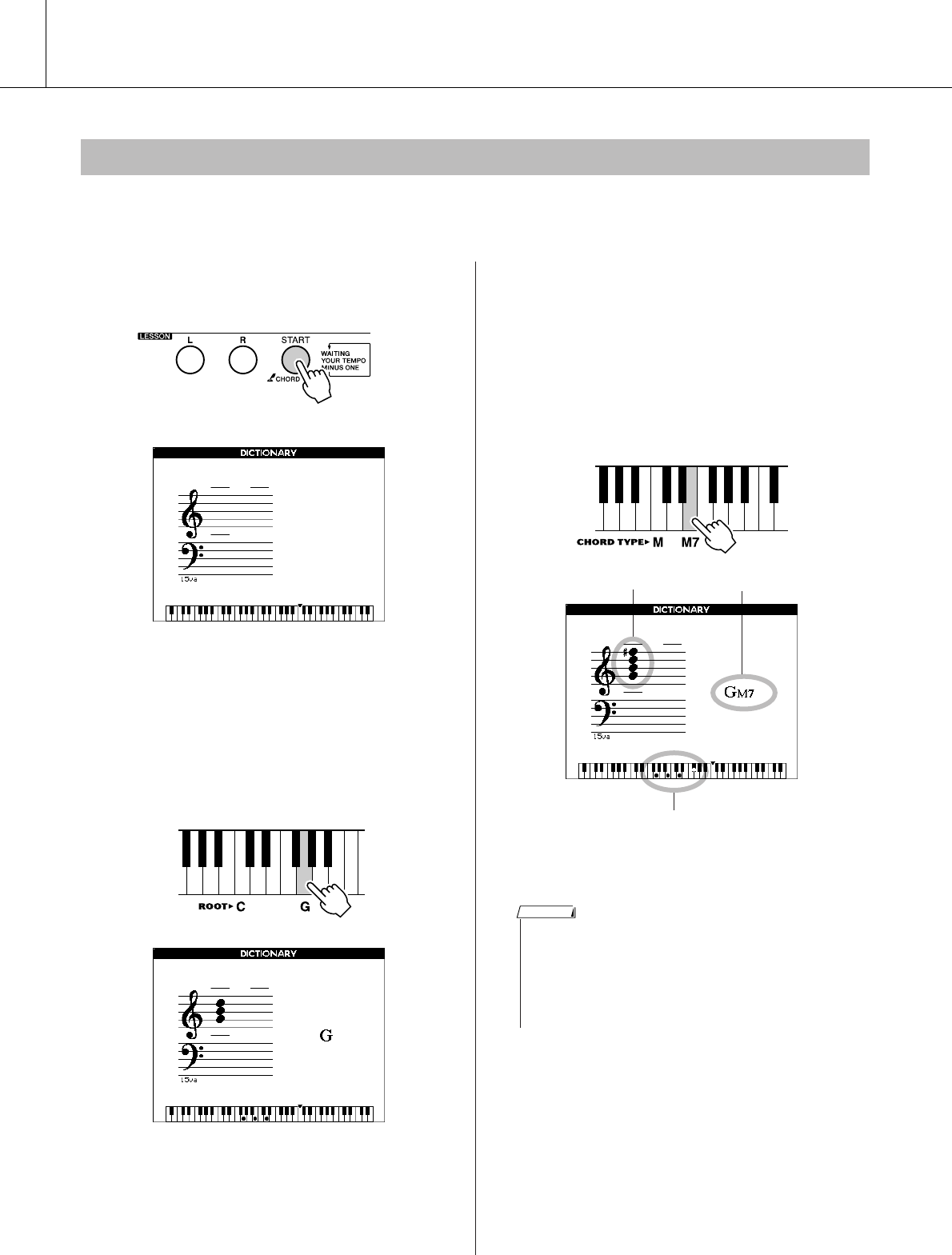
82 DGX-620/520, YPG-625/525 Owner’s Manual
Style (Auto-accompaniment) Functions
The Dictionary function is essentially a built-in “chord book” that shows you the individual notes of chords.
It is ideal when you know the name of a certain chord and want to quickly learn how to play it.
1
Press and hold the LESSON [START]
button for longer than a second.
2
As an example, we’ll learn how to play a
GM7 (G major seventh) chord. Press the
“G” key in the section of the keyboard
labeled “ROOT”. (The note doesn’t
sound.) The root note you set is shown
in the display.
3
Press the “M7” (major seventh) key in
the section of the keyboard labeled
“CHORD TYPE”. (The note doesn’t
sound.) The notes you should play for
the specified chord (root note and
chord type) are shown in the display,
both as notation and in the keyboard
diagram.
To call up possible inversions of the chord,
press the [+]/[-] buttons.
4
Try playing a chord in the auto accom-
paniment section of the keyboard,
checking the indications in the display.
When you’ve played the chord properly,
a bell sound signals your success and
the chord name in the display flash.
Press the [EXIT] button to return to the MAIN
display.
Looking Up Chords Using the Chord Dictionary
Hold for longer than a second
Notation of chord Chord name (root and type)
Individual notes of chord (keyboard)
• About major chords: Simple major chords are usually indicated only
by the root note. For example, “C” refers to C major. However, when
specifying major chords here, make sure to select “M” (major) after
pressing the root note.
• Be aware that the chord types explained here are the left-hand
notes applied to various styles and different from the one for the per-
formance assistant technology feature.
NOTE


















